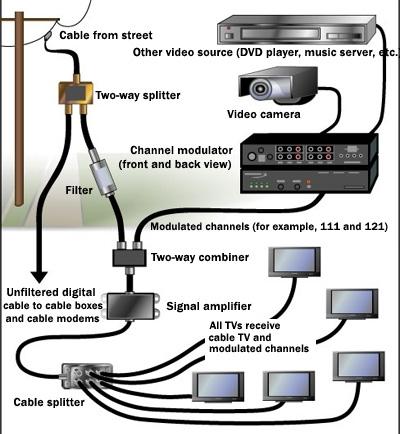Step by Step: How to Create a Video Distribution System

"Two hundred channels and nothing to watch!" How many times have you felt that way? Or maybe you've wanted to finish watching a DVD in another room but didn't have a second player. Or wished you could keep an eye on the kids outside without sitting in the sweltering heat. Or wanted to see the video display from your iPod docked in another room. Imagine the possibilities if you could create your own TV channel so any composite-video signal could be viewed on any set in your house. Not only is this possible, it's easier than you think. Read on, and you'll soon be creating channels like Ted Turner!
Step 1: Which Content Provider? If you have basic cable or use an antenna to get your programming, you'll have the easiest install - skip to Step 3. Digital- satellite owners have it fairly easy, too - they can skip to the third paragraph of Step 2. But if you have digital cable, your row is a little tougher to hoe.
Step 2: Digital Signal Options Modulating channels was a lot easier before digital cable. To use a cable box, CableCARD, or the QAM tuner in your HDTV along with modulated channels, you'll need to have at least two runs of coax cabling to each TV - one for the unaltered digital-cable signal and another for the modulated channels. That's one reason why two RG-6 coax runs are considered the minimum for structured wiring.
If a second coax cable isn't available and you can't retrofit new cabling, Channel Vision's Affinity system will solve the problem. It's an A/B switch that toggles between the digital-cable and modulated feeds, using an RF remote. Affinity starts at about $400 for a single modulated channel to one TV, and it goes to nearly $1,700 for four modulated channels to four TVs.
If you get your programming via digital satellite, you're in luck because satellite signals can coexist on the same coax line as modulated channels. Connect the feed from the channel modulator to the antenna input of your satellite's multiswitch. This will automatically combine your modulated channels with the satellite signal. On the TV side, use a diplexer to separate the satellite and modulated signals back into two cables. Now skip to Step 4. (You can skip Step 6, too.)




























































